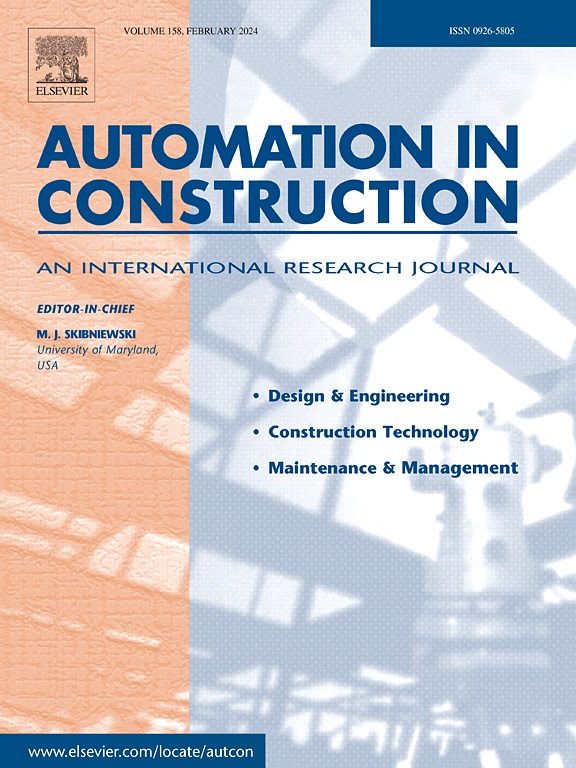Deep learning for automated crack quantification with distributed fiber optic sensing: Addressing strain overlap and interface nonlinearity
IF 11.5
1区 工程技术
Q1 CONSTRUCTION & BUILDING TECHNOLOGY
引用次数: 0
Abstract
Distributed fiber optic sensors (DFOS) hold significant potential for automation in construction, particularly in identifying and quantifying cracks through strain distributions. However, interpreting these distributions is challenging, especially when strain peaks overlap and there is nonlinearity in the cable-structure interface. To address this problem, this paper develops a deep learning model, termed Physical-Constrained FiberNet (PC-FiberNet), to intelligently interpret strain distributions under multiple crack scenarios. PC-FiberNet accurately identifies the location and width of each crack while simultaneously estimating the material and interfacial parameters of the cable. These parameters facilitate the development of numerical models. To enhance the robustness and generalizability of the proposed model, a transfer learning approach is employed. The performance of PC-FiberNet is validated through extensive tests and simulations. This paper enhances the application of DFOS to structural health monitoring, offering an effective approach to crack quantification in a multi-cracking scenario.
基于分布式光纤传感的深度学习自动裂纹量化:处理应变重叠和界面非线性
分布式光纤传感器(DFOS)在建筑自动化方面具有巨大的潜力,特别是在通过应变分布识别和量化裂缝方面。然而,解释这些分布是具有挑战性的,特别是当应变峰重叠和索-结构界面存在非线性时。为了解决这个问题,本文开发了一个深度学习模型,称为物理约束FiberNet (PC-FiberNet),以智能地解释多种裂纹场景下的应变分布。PC-FiberNet可以准确识别每个裂缝的位置和宽度,同时估算电缆的材料和界面参数。这些参数有助于数值模型的发展。为了提高模型的鲁棒性和可泛化性,采用了迁移学习方法。PC-FiberNet的性能通过大量的测试和仿真得到验证。本文加强了DFOS在结构健康监测中的应用,为多裂纹情况下的裂纹量化提供了一种有效的方法。
本文章由计算机程序翻译,如有差异,请以英文原文为准。
求助全文
约1分钟内获得全文
求助全文
来源期刊

Automation in Construction
工程技术-工程:土木
CiteScore
19.20
自引率
16.50%
发文量
563
审稿时长
8.5 months
期刊介绍:
Automation in Construction is an international journal that focuses on publishing original research papers related to the use of Information Technologies in various aspects of the construction industry. The journal covers topics such as design, engineering, construction technologies, and the maintenance and management of constructed facilities.
The scope of Automation in Construction is extensive and covers all stages of the construction life cycle. This includes initial planning and design, construction of the facility, operation and maintenance, as well as the eventual dismantling and recycling of buildings and engineering structures.
 求助内容:
求助内容: 应助结果提醒方式:
应助结果提醒方式:


